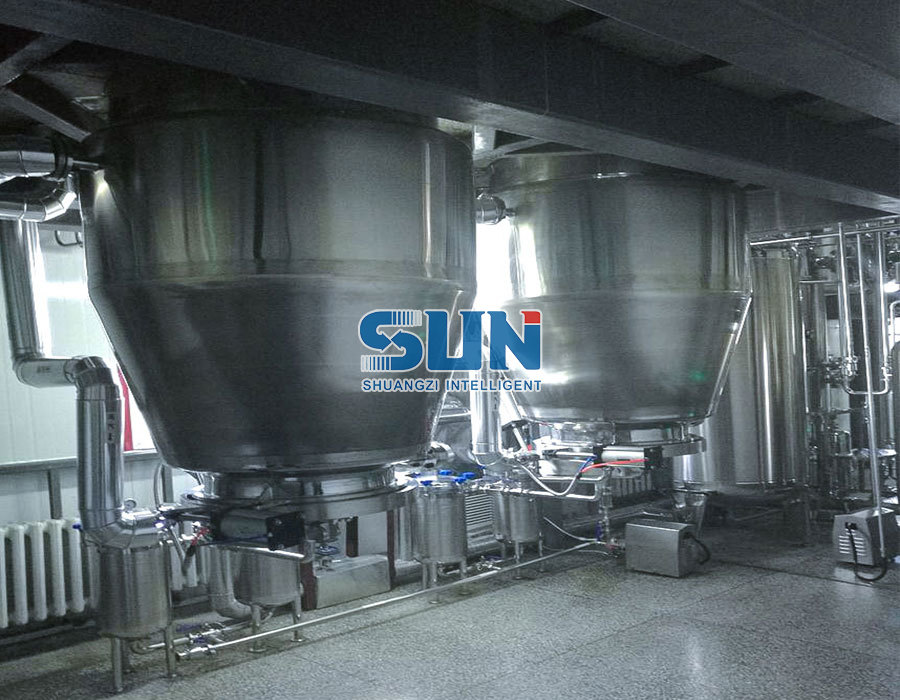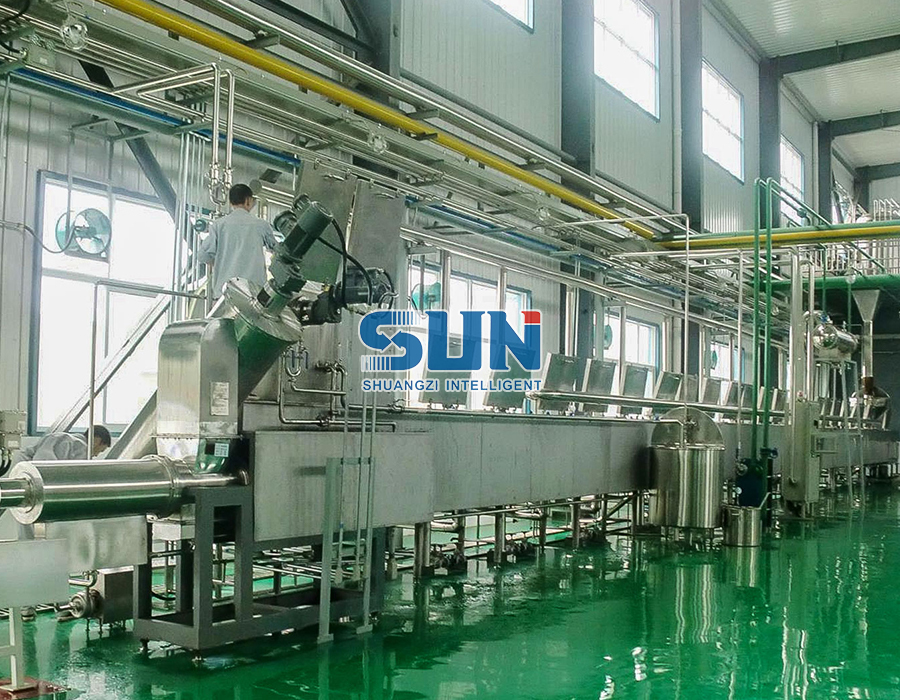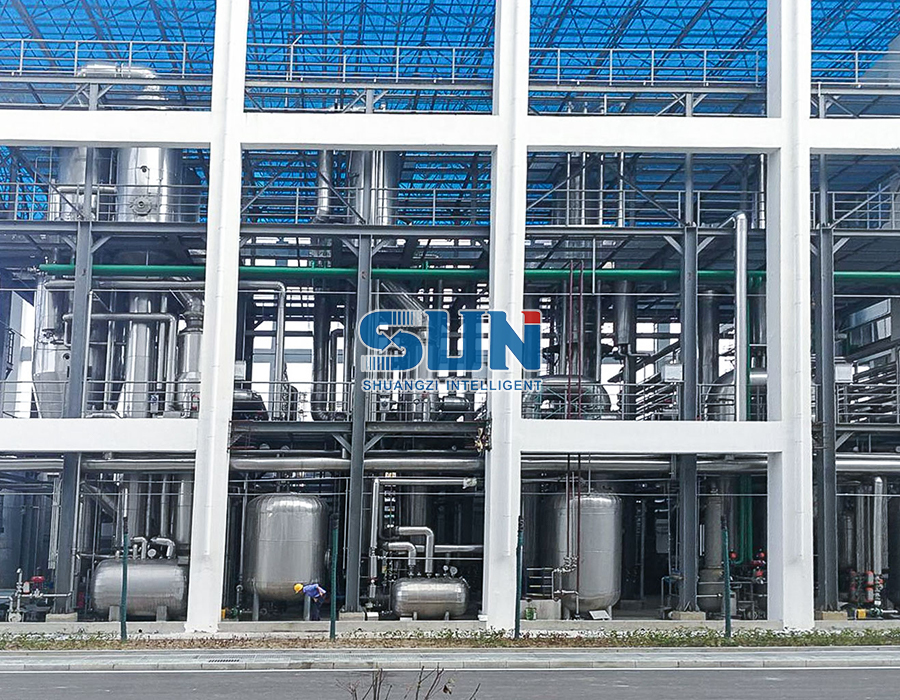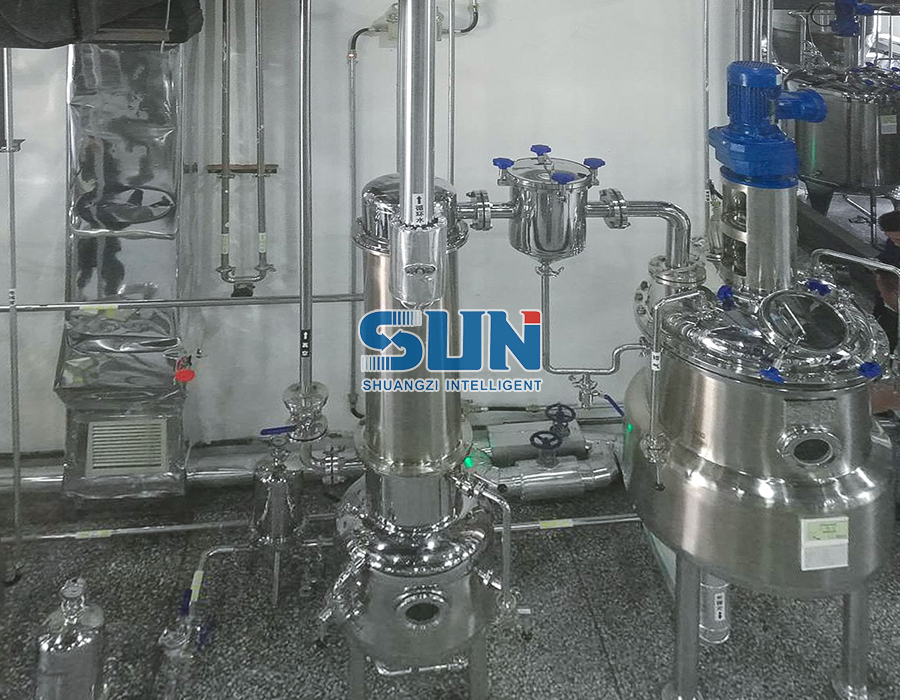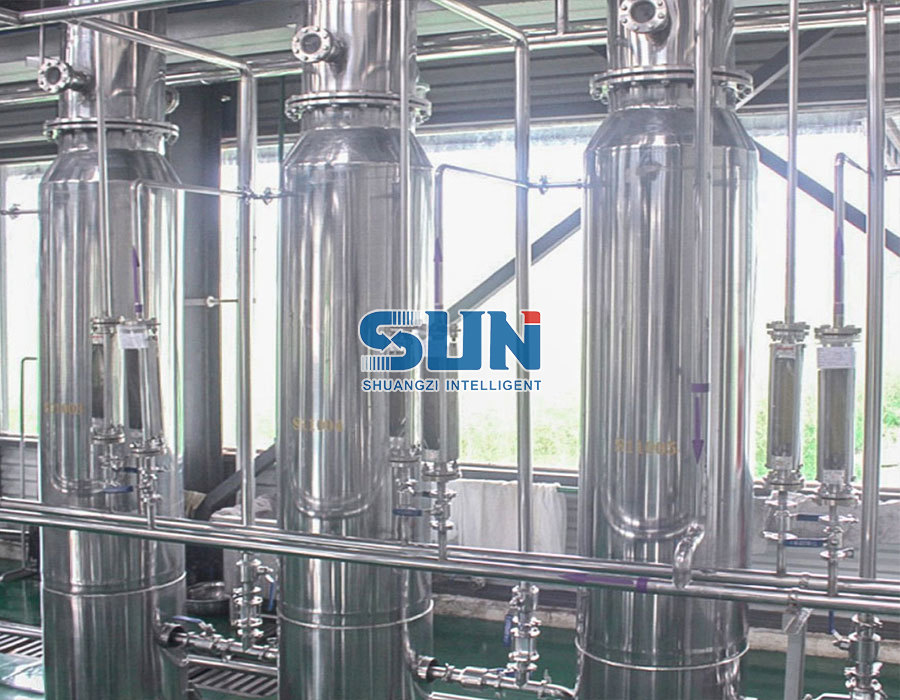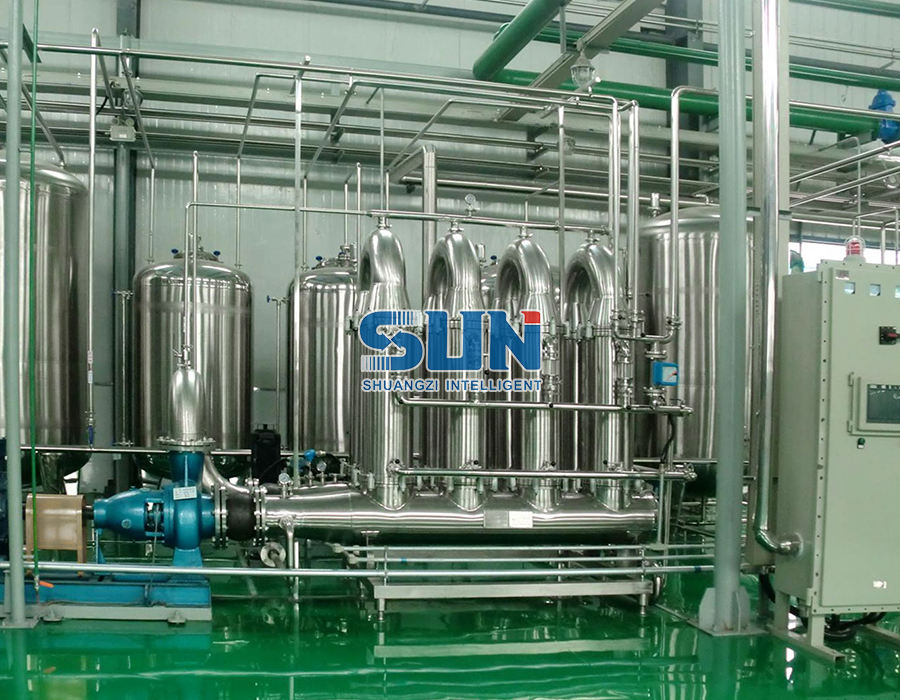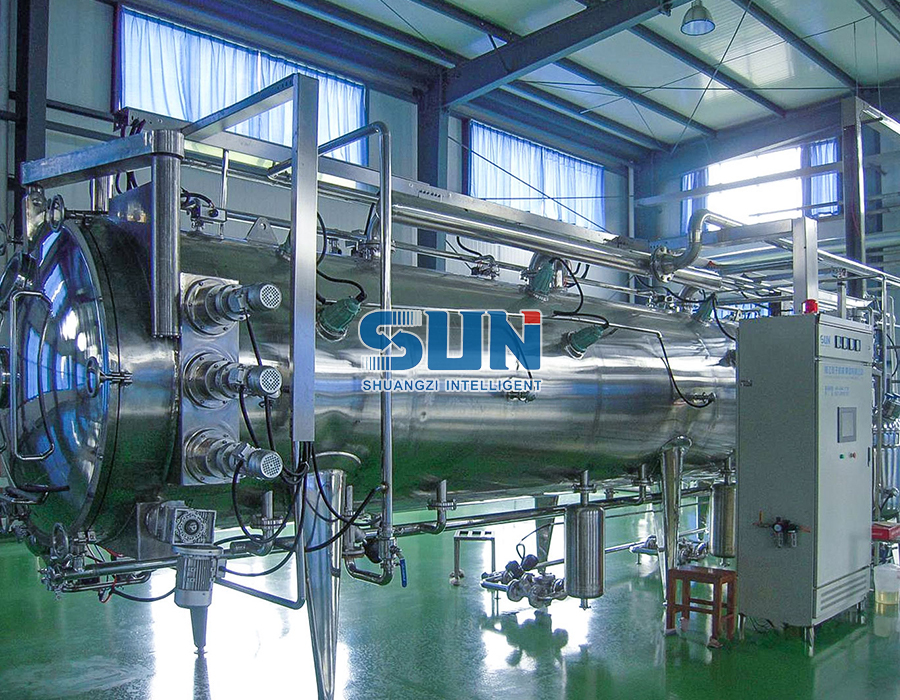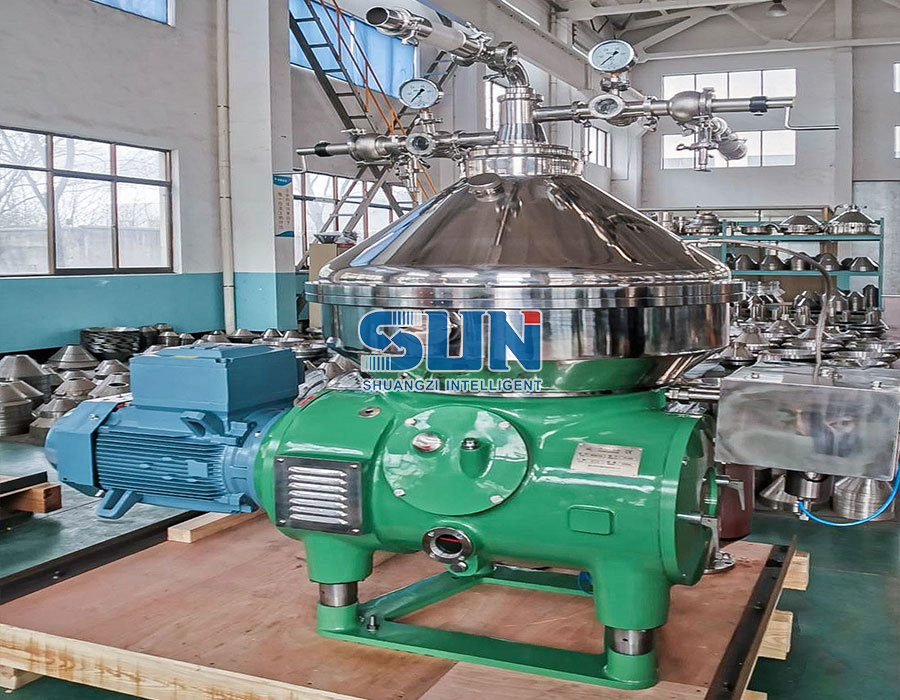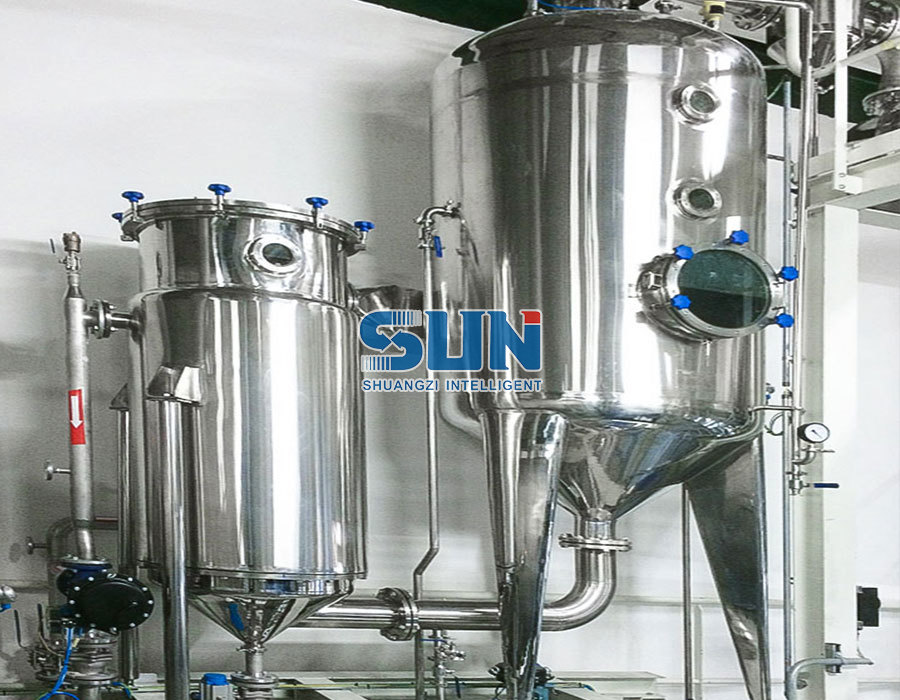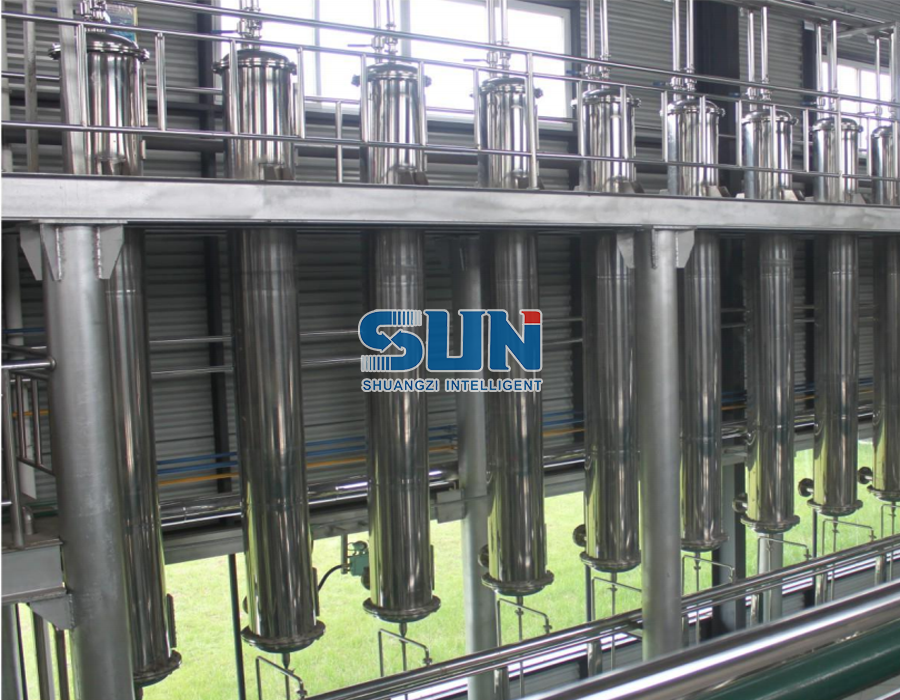A falling film evaporator enhances the evaporation rate through its unique design and operational characteristics. Here's how a falling film evaporator achieves an improved evaporation rate:
Thin Liquid Film: In a fall film evaporator, the liquid to be evaporated flows down the inside walls of vertical tubes or plates as a thin film. This thin film maximizes the surface area of contact between the liquid and the heating surface, allowing for efficient heat transfer.
High Heat Transfer Coefficient: Fall film evaporators are designed to maximize heat transfer efficiency. The thin liquid film, combined with the counter-current flow of the heating medium (usually steam), ensures a high heat transfer coefficient. This means that heat is transferred rapidly from the heating surface to the liquid film.
Uniform Temperature Profile: As the liquid flows down the heated surface, it is uniformly heated. The thin film and the continuous flow of liquid promote a consistent temperature profile along the length of the evaporator. This uniform heating prevents hot spots and ensures that the liquid is exposed to the desired evaporation temperature throughout the process.
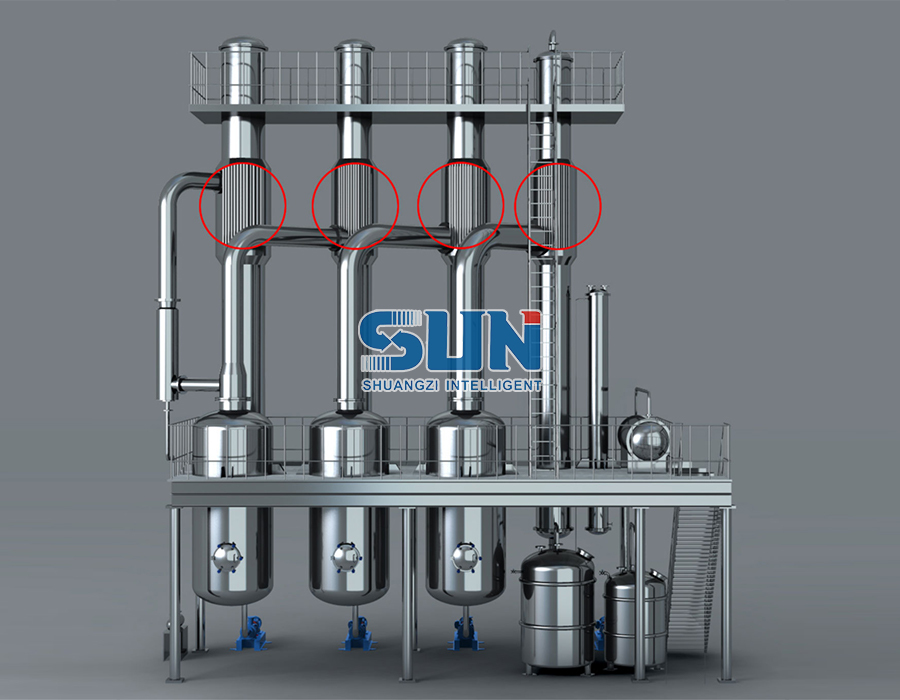

Rapid Vaporization: The efficient heat transfer and uniform heating in a fall film evaporator result in rapid vaporization of the liquid. The thin film quickly reaches its boiling point, leading to the immediate conversion of liquid into vapor. This rapid vaporization significantly increases the evaporation rate.
Continuous Operation: Fall film evaporators operate continuously, allowing for a steady and uninterrupted flow of liquid through the system. This continuous operation ensures a consistent evaporation rate over time and is particularly advantageous in industrial processes requiring high throughput.
Short Residence Time: The fall film evaporator is designed for short residence times, meaning that the liquid spends only a brief period in contact with the heated surface. This minimizes the exposure of the liquid to elevated temperatures, making it suitable for heat-sensitive materials.
Effective Vapor-Liquid Separation: The design of a fall film evaporator encourages efficient vapor-liquid separation. The vapor rises quickly due to its lower density, while the liquid film flows downward. This clear separation minimizes the risk of vapor re-condensation in the liquid, which could otherwise slow down the evaporation rate.
Optimized Heat Exchanger Design: The heat exchanger components within the fall film evaporator are carefully designed and configured to maximize heat transfer rates. The geometry, size, and materials of the heat transfer surfaces are optimized for specific applications.
Precise Control: Operators can precisely control key parameters such as temperature, flow rates, and vacuum level in a fall film evaporator. This control allows for the fine-tuning of the evaporation process to maintain optimal conditions for maximum evaporation rate.
Fall film evaporator enhances the evaporation rate through its efficient heat transfer, uniform temperature profile, rapid vaporization, continuous operation, short residence time, and effective vapor-liquid separation. These characteristics make it a preferred choice in industries requiring high-speed evaporation while maintaining product quality and integrity.


 英语
英语 俄语
俄语